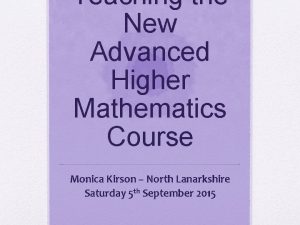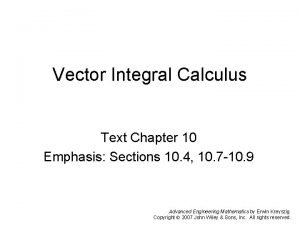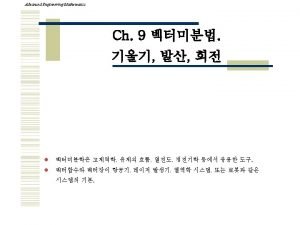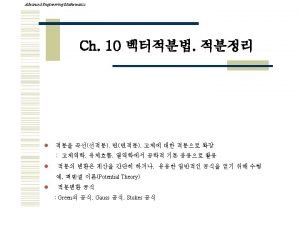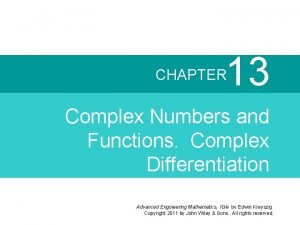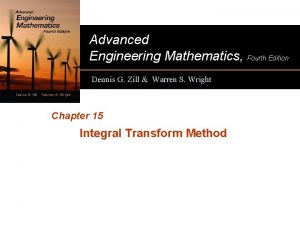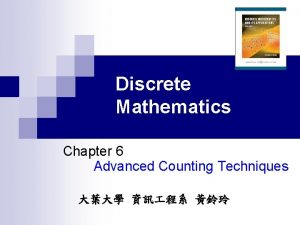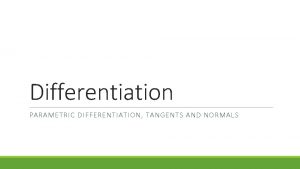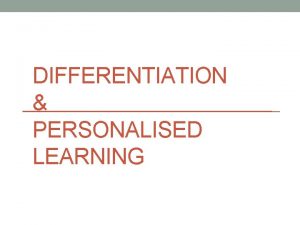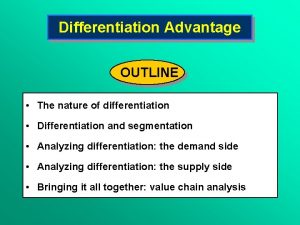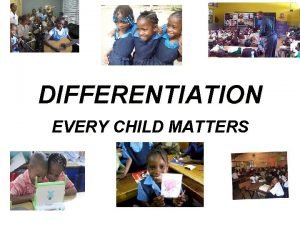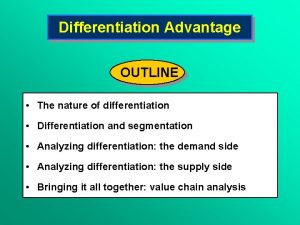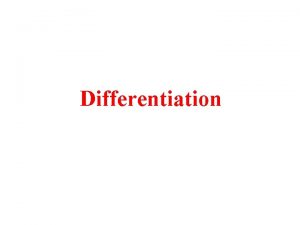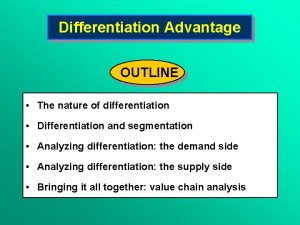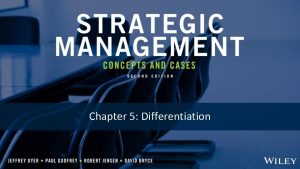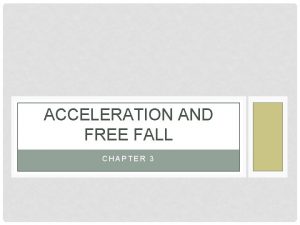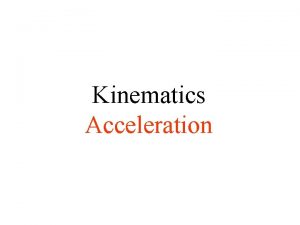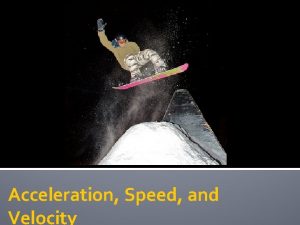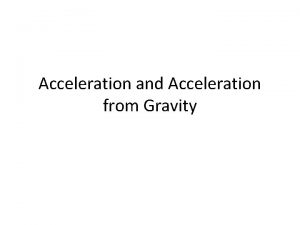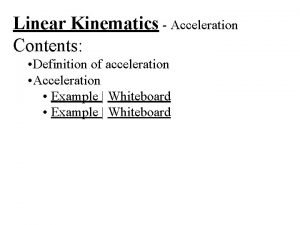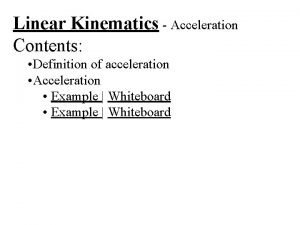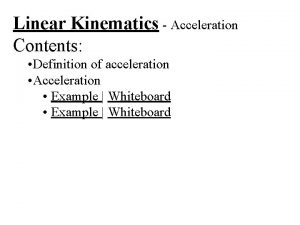Mathematics Acceleration and Differentiation for Advanced Mathematics Students

































- Slides: 33

Mathematics Acceleration and Differentiation for Advanced Mathematics Students APRIL 28, 2016 NWESD HI-CAP COHORT MARY ELLEN HUGGINS

What is This?

“This is a blend of how engineering really meets common sense, " said LADWP General Manager Marcie Edwards. "We saved a lot of money; we did all the right things. ” LA Times August 11, 2015

The idea for L. A. ’s shade balls came when a now -retired LADWP biologist learned about the application of “bird balls” in ponds along airfield runways. Airports have detention basins to collect stormwater runoff. As the ponds fill up, they attract birds. So airports float the balls on the ponds to keep the birds off. December, 2015 www. dailynews. com/. . . /garcetti-officials-release-

Definition of Learning Characteristics WAC 392 -170 -036 • Capacity to learn with unusual depth of understanding, to retain what has been learned, and to transfer learning to new situations. • Capacity and willingness to deal with increasing levels of abstraction and complexity earlier than their chronological peers. • Creative ability to make unusual connections among ideas and concepts. • Ability to learn quickly in their area(s) of intellectual strength. • Capacity for intense concentration and/or focus.

Definition of Learning Characteristics WAC 392 -170 -036 • Capacity to learn with unusual depth of understanding, to retain what has been learned, and to transfer learning to new situations. • Capacity and willingness to deal with increasing levels of abstraction and complexity earlier than their chronological peers. • Creative ability to make unusual connections among ideas and concepts. • Ability to learn quickly in their area(s) of intellectual strength. • Capacity for intense concentration and/or focus.

Objectives for Today Part 1: • Participants will understand better how to create a math pathway that addresses the needs of highly capable math students Part 2: • Participants will examine strategies and structures within a unit of study that address differentiation for highly capable math students

What do You Notice, What do You Wonder? • Refer to Math Pathways 1 and 2 • Pair up with a partner and choose to look at one of the Math Pathways • Record what you notice and what you wonder about each pathway • Move from pair to quartet to share out • Share with whole group

Common Core State Standards Math Guidelines Appendix A has outline for compacted curriculum for the middle school mathematics. • Accelerate after 6 th grade • Compact 3 years of math into 2 years • 7 th grade: All 7 th grade standards and appropriate 8 th grade standards • 8 th grade: Remaining 8 th grade standards and Algebra 1 standards

Common Core State Standards Math Guidelines Compacted courses should include identical CC Math Standards as non-compacted courses. Decisions to accelerate students into the CCSS for HS Math before 9 th grade • should not be rushed • should be based on solid evidence of student learning Menu of challenging options available after 3 rd year of math - all students encouraged to take 4 years of math in HS

How to Accelerate Students after 9 th Grade • Allow students to take two mathematics courses simultaneously or both semesters with block scheduling • Offer summer courses designed to provide equivalent experience of a full course in all regards • Creating different compaction ratios, including 4 years of HS content into 3 years beginning in 9 th grade or a hybrid Algebra 2 - Pre calculus course so students can go straight to Calculus

A Look at the Compacted Curriculum

Components of Secondary Highly Capable Math Courses Curricula Assessment F and S �Creative Thinking �Critical Thinking �Problem Solving �Independent Study �Process and product (tasks-modeling) �Independent learning can be assessed �Contextual �Levels of Cognitive Demand

Differentiating an Honors Course Take a few minutes to reflect on what you believe is the difference between a general education mathematics course and an honors mathematics course. Share with an elbow partner. Share out as whole group.

Reflection Complete your Reflection sheet. Choose one of the three comments to share with someone you have not talked with yet this morning.

Objectives for Today Part 2: • Strategies and structures within a unit of study that address differentiation for our advanced mathematics students

Building a Unit for Hi-Cap 1. Determine the standards for a given unit 2. Pre assess for students’ understanding 3. Create a menu of tasks - include modeling 4. Offer required and choice tasks 5. Post assess

Modeling • Estimate how much water and food is needed for emergency relief in a devastated city of 3 million people and how it might be distributed • Plan a table tennis tournament for 7 players at a club with 4 tables where each player plays against each other player. • Relate population statistics to predictions you have made • Analyze the stopping distance of a car

Ratios and Proportional Relationships Understand ratio concepts and use ratio reasoning to solve problems. Use ratio and rate reasoning to solve real‐world and mathematical problems, e. g. , by reasoning about tables of equivalent ratios, tape diagrams, double number line diagrams, or equations. A. Make tables of equivalent ratios relating quantities with whole ‐ number measurements, find missing values in the tables, and plot the pairs of values on the coordinate plane. B. Use tables to compare ratios. Use ratio reasoning to convert measurement units; manipulate and transform units appropriately when multiplying or dividing quantities.

Assess Before Teaching Content Students Already Have Mastered Snail A traveled 25 inches in an hour Snail B spent 15 minutes traveling ⅔ foot Snail C traveled 8 inches in 15 minutes Determine a rate for Snail D based on the following parameters: Snail D traveled faster than Snail A but slower than Snail B. Graph the pathway of Snail A and Snail B on the same coordinate grid. Make up a question of your own and choose a friend to solve it.

Assess Before Teaching Content Students Already Have Mastered

Menu Use Resources • Grade level curriculum • Illustrative Mathematics • Inside Mathematics • Youcubed. org • Math Assessment Project Create a list of tasks aligned to a cluster heading

Menu Post the tasks on classroom walls • DOK levels (1 -3) • Contextual • Games • Include modeling

Menu Individualize for students and offer choice • Students complete 3 -4 of the assigned tasks • Additional tasks depending on Pre-Assessment • Advanced students asked to extend their learning • Mid-menu debrief of 1 -2 of the mandatory tasks • Teacher indicates 1 task to score; students select one task as best work

Expressions and Equations Menu • • Properties of Exponents Growing Dots a & b& c Increasing Patterns #1 a & #1 b Cubes Patterns # 1 a & #1 b Navigating the Pentagon II Increasing Patterns #4 a & #4 b Increasing Pattern #5 Desert • • • Janet’s Conundrum Miles of Tiles Cubes Pattern #4

POST ASSESSMENT Example: Two groups of campers had pizza parties. At Bear Camp, there were two pizzas for every three campers. At Wolf Camp, there were three pizzas for every five campers. Which campers had the most pizza to eat? Share your thinking and justify your answer in at least 2 ways.


A Look at the Standards

Pre Assessment-F. TF. 1 & 2 Determine the sine and cosine of the following angles. Explain how you determined the sine an cosine. Angle Measure 0° 30° 45° 60° 90° Sine Cosine

What Does Instruction Look Like? What would you expect to see students and teachers doing? Share with table group.

Looking at the Unit Circle and the Graphs of Trigonometric Functions

Post Assessment

Reflection What is one idea you could bring back to your honors/advanced teachers to start a conversation around differentiation in their math classes? Share with an elbow partner.
 Difference between linear and angular acceleration
Difference between linear and angular acceleration Linear acceleration vs tangential acceleration
Linear acceleration vs tangential acceleration Centripetal acceleration tangential acceleration
Centripetal acceleration tangential acceleration Centripetal acceleration
Centripetal acceleration Radial acceleration definition
Radial acceleration definition Advanced higher mathematics of mechanics
Advanced higher mathematics of mechanics Counting techniques in discrete mathematics
Counting techniques in discrete mathematics Advanced engineering mathematics
Advanced engineering mathematics Engineering mathematics
Engineering mathematics Engineering mathematics
Engineering mathematics Advanced engineering mathematics
Advanced engineering mathematics Advanced engineering mathematics dennis g zill 4th edition
Advanced engineering mathematics dennis g zill 4th edition Understanding standards advanced higher english
Understanding standards advanced higher english Advanced counting techniques in discrete mathematics
Advanced counting techniques in discrete mathematics Rizal's salute to luna and hidalgo
Rizal's salute to luna and hidalgo Iso 22301 utbildning
Iso 22301 utbildning Typiska novell drag
Typiska novell drag Tack för att ni lyssnade bild
Tack för att ni lyssnade bild Returpilarna
Returpilarna Varför kallas perioden 1918-1939 för mellankrigstiden?
Varför kallas perioden 1918-1939 för mellankrigstiden? En lathund för arbete med kontinuitetshantering
En lathund för arbete med kontinuitetshantering Personalliggare bygg undantag
Personalliggare bygg undantag Tidbok för yrkesförare
Tidbok för yrkesförare Sura för anatom
Sura för anatom Vad är densitet
Vad är densitet Datorkunskap för nybörjare
Datorkunskap för nybörjare Tack för att ni lyssnade bild
Tack för att ni lyssnade bild Mall för debattartikel
Mall för debattartikel Delegerande ledarstil
Delegerande ledarstil Nyckelkompetenser för livslångt lärande
Nyckelkompetenser för livslångt lärande Påbyggnader för flakfordon
Påbyggnader för flakfordon Lufttryck formel
Lufttryck formel Offentlig förvaltning
Offentlig förvaltning Urban torhamn
Urban torhamn





